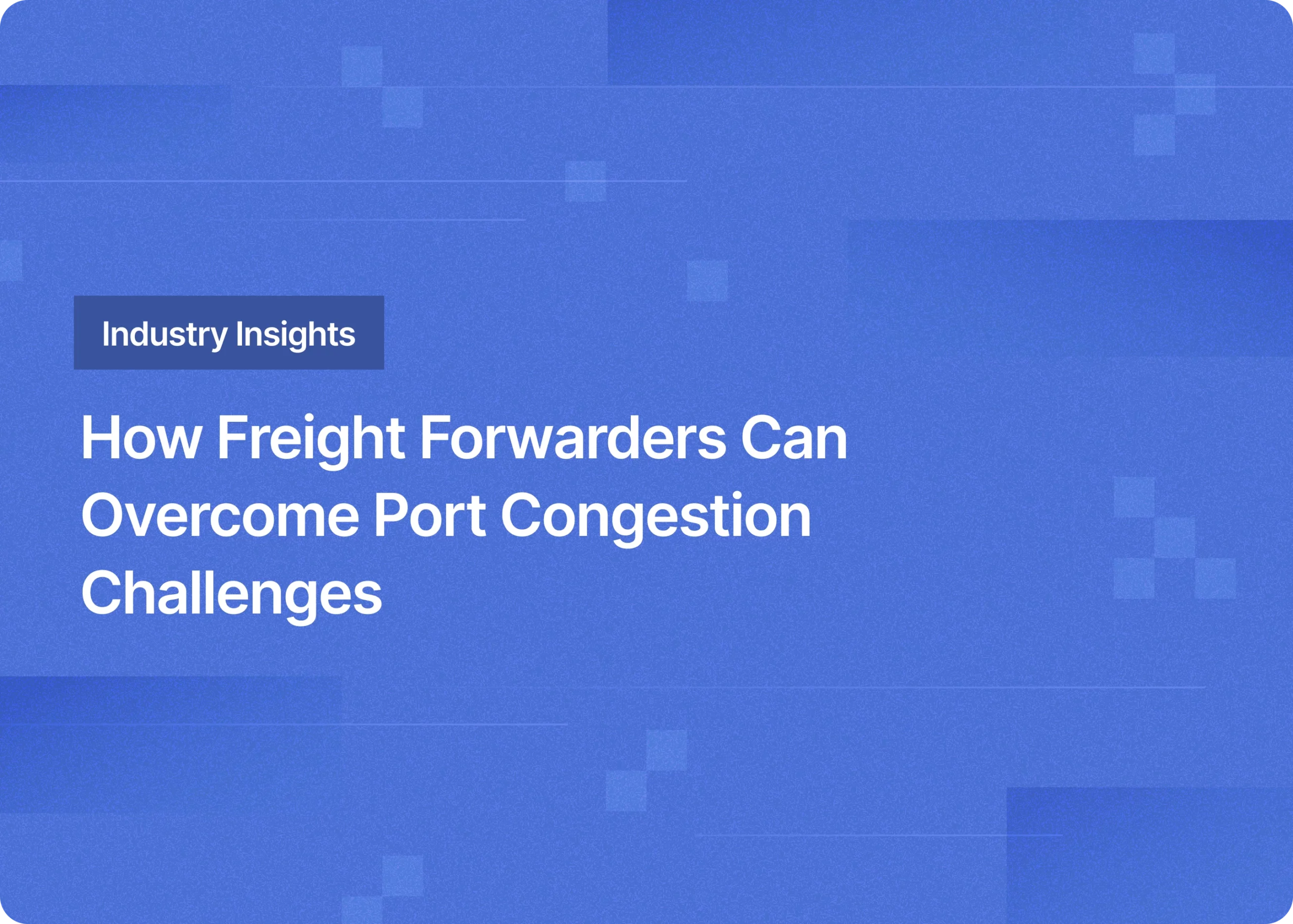Because of COVID-19, the entire year has been the peak shipping season, resulting in a serious problem, port congestion. Day-to-day port congestion issues continue to be a source of concern for the freight forwarding industry. With partners relying on freight forwarders to fulfill shipping agreements regardless of the current global freight movement, freight forwarding companies must understand the existing challenges as well as the current solutions available for these challenges.
The impact of port congestion on freight forwarders
Persistent port congestion issues present three major challenges for freight forwarders:
1. Shipment Visibility
Freight forwarders struggle to obtain accurate shipment status information as compliance and customs regulations become more complex, as well as increased cargo unloading time due to high container ship volume. As a result, cargo processing and approval may take longer than expected, resulting in subsequent logistical activities being delayed or rescheduled.
2. Unpredictable Incidents
As the recent EverGreen incident illustrates, freight forwarders can’t forecast what will happen to containers both during transport and when they arrive at the port. This implies that shipments that appear to be on track may face unforeseen barriers that will result in significant shipment delays.
3. Value
The longer containers remain in port without being unloaded or processed, the less value they have due to detention and demurrage charges. Furthermore, in order to stand out and establish long-term relationships, freight forwarding companies offer competitive pricing in order to secure contracts with suppliers and manufacturers in a saturated market. However, with the issues of port congestion, freight forwarders are frequently faced with lost revenue due to unfulfilled contractual obligations.

Solutions to Port Congestion Issues
While not all port congestion issues are avoidable, freight forwarders can reduce their risks and efforts by implementing the following solutions:
Real-time tracking system
The container tracking system provided by GoFreight allows you to track your container shipments at any time and from any location. With 99% coverage on rail, terminal, and carrier EDI, GoFreight enables shipment visibility, eliminating the need for manual tracking operations and lowering detention and demurrage fees by meeting payment and empty return deadlines.
Self-service tracking portal
When customers request for their shipment status, they want to know where it is right away. GoFreight’s customer portal makes this possible where customers will be able to get the information they want on demand immediately. Customers will be informed about potential port delays without requiring freight forwarders to spend time on locating containers and communicating with customers. The customer portal adds value to any partnership, allowing freight forwarders to gain a competitive edge and instill confidence in their ability to manage and handle port congestion problems.

Freight Forwarding Software Solution
GoFreight not only provides industry-leading container tracking solutions, but also freight forwarding software solutions. Please contact GoFreight experts if you want to learn more about how GoFreight can alleviate your operational pains and accelerate your business growth!



